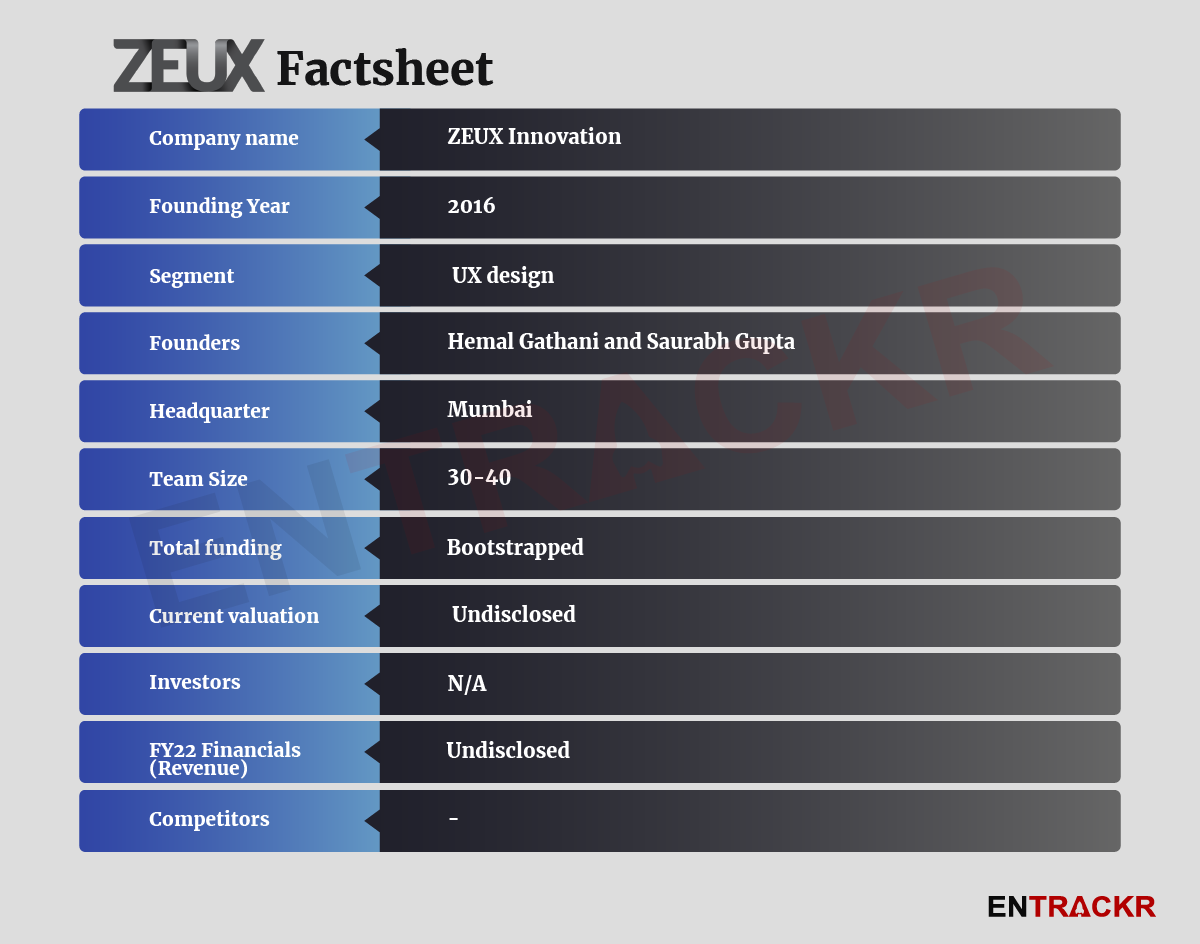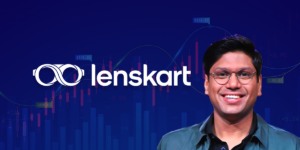“We noticed that when you deliver a design, it’s very hard for the client to measure whether the design solution was effective or not. A lot of the process of designing is about focusing on the aesthetics…and we really wanted to change that,” Saurabh Gupta, founder and CEO of ZEUX Innovation told Entrackr.
Mumbai-based ZEUX Innovation was set up by Hemal Gathani and Gupta in 2016. The duo initially worked together in an American design firm. While working in the industry, they realized the need for a business outcome-driven design process. It also provides strategic consulting and rebranding services to clients according to their needs and goals.
“If you want to deliver a business outcome you have to ask the client, what outcome are you chasing. You’d be surprised how many times the design work starts without asking those basic questions. People fail to ask the basic question, “What is the outcome you’re chasing?”, Gupta said.
The company’s client base consists of 70% large enterprises and 30% small businesses. And 50% of its clients are retained over multiple projects. It has worked on projects with companies situated in South Africa, Middle East, the Asia Pacific.
Gupta claimed that the company has worked on over 55 projects and has generated an ROI of around $15 million to date.
ZEUX Innovation has two main revenue models — project-based pricing, which as the name suggests charges the client a fixed amount based on the project timeline, resources required, and scope of work.
The other pricing model used is a retainer model- this involves the client paying a fixed monthly or quarterly fee to retain the services provided for a specific number of hours.
The company plans to expand its services across the globe to work with companies to provide digital solutions.
ZEUX Innovation shares the space in the industry with companies like Netherlands-based CLRD, Japan-based Hikidashi, and China-based Eall.
The Indian UX design market has seen a quick growth in the last couple of years largely due to the adoption of new technologies like the development seen in AI and virtual reality. The industry is likely to reach $9 billion by 2025 with a growth rate of 20%.















